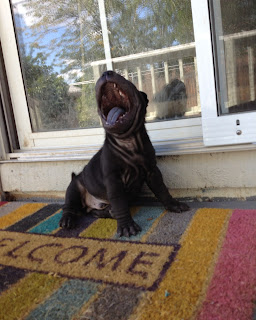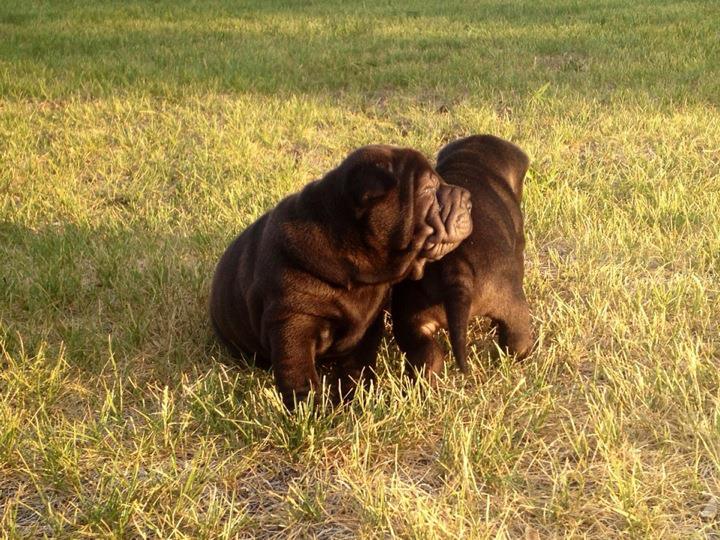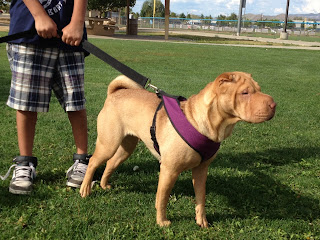What's the difference? Well, the easy answer is a lot. (Our family is lucky to have both:)
 |
| Traditional Chinese Shar Pei |
 |
| Traditional Chinese Shar Pei features |
Here are some quick facts:
The Traditional Chinese Shar Pei looked quite different than what we are used today and what has become a popular representation of the breed.
People in southern China, Hong Kong, and Macau differentiate the Western type and the original type by calling them respectively 'meat-mouth' and
'bone-mouth' Shar-Pei. The picture above is of a Traditional Chinese Shar Pei. They appear to be lean, muscular, tail slightly curly and with a short horse coat. What is a horse coat you ask? Well, a horse-coat (unusual but regaining ground), is rough to the touch, extremely prickly and off-standing, soft in one direction and harsh in the other.
 |
Savannah always regal.
Western Chinese Shar Pei |
 |
| Example of Western Chinese Shar Pei Pups |
Western Chinese Shar Pei also referred to as the "Golden Lion".
Since its introduction to the U.S the Shar Pei has become a more cumbersome dog with a large number of health issues bought on by over breeding. Western features commonly is identified as a hippo mouth also referred to as "meat mouth" and most commonly have a brush-coat, with longer hair and a smoother feel. They also tend to have a complete curly tail "the tail is thick and round at the base, tapering to a fine point" (AKC standard February 28, 1998).
Because of its popularity after being introduced to North America in the 1970s, the breed suffered much inexperienced or rushed breeding. This resulted not only in a dramatically different look for the Shar-Pei (as its most distinctive features, including its wrinkles and rounded snout, were greatly exaggerated).
 |
| Look at how blue my tongue is! |
Blue Tongue
The Shar-Pei, like the Chow-Chow, has a blue-black tongue; most have a completely blue tongue but lighter or dilute colors maybe may have a lavender color. All puppies tongue turn blue by 6 weeks of age.
To learn more check out @
http://en.wikipedia.org/wiki/Shar_Pei













